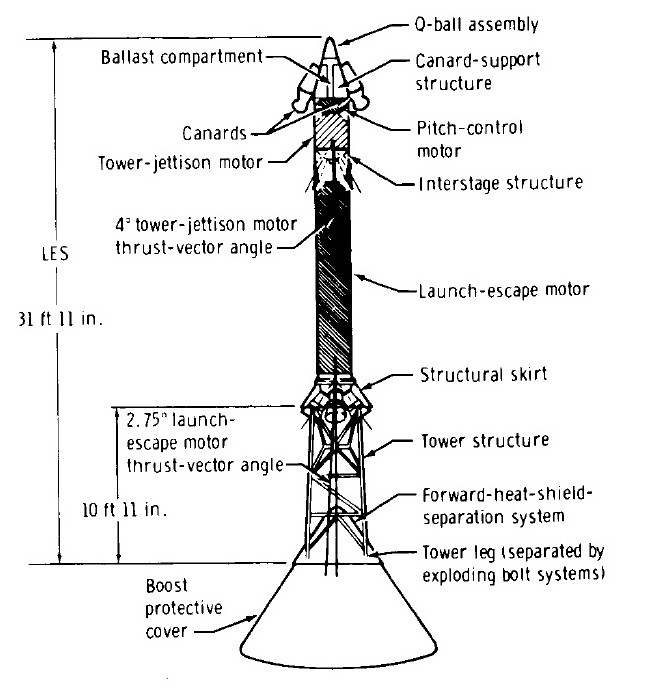DRUMS01
Looks good GAF!, that will be a monster when it is done.....
N-I-C-E !!!
Ben
Thanks, Ben! At 1/48 scale it is a rather large model. Sure wish I had the workshop to build a 1/48 scale Saturn V!
Project Report:
Slow progress continues, as the nozzles for the jettison rockets have been drilled out of the sides of the LES as shown here:

Naturally, they need some work, so filing and sanding around the openings is ongoing.
Meanwhile, the top of the capsule for the parachute recovery system is being made, and sanding and filing is being done on this part. This is a section of what is called above the Forward-Heat-Shield Separation System. (NOTE: The Boost Protective Cover is not part of the Block I Apollo configuration.)
No images at this time. Hope to have it tidied up and finished by this weekend.
Mission Director (GAF)
1967 November 15 - . Launch Site: Edwards AFB.
Death of Michael James 'Mike' Adams at Edwards AFB, California. Died in X-15 crash when spacecraft went out of control during reentry. - . Nation: USA. Related Persons: Adams. American test pilot astronaut. Flew on X-15 Flight 191.
1988 November 15 - . 03:00 GMT - . Launch Site: Baikonur. Launch Complex: Baikonur LC110L. LV Family: Buran. Launch Vehicle: Buran launch vehicle.
Buran - . Payload: Buran OK-1K s/n 711. Mass: 79,400 kg (175,000 lb). Nation: Russia. Agency: MOM. Program: Buran. Class: Manned. Type: Manned spaceplane. Spacecraft: Buran. Duration: 0.14 days. Decay Date: 1988-11-15 . USAF Sat Cat: 19637 . COSPAR: 1988-100A. Apogee: 256 km (159 mi). Perigee: 247 km (153 mi). Inclination: 51.6000 deg. Period: 89.50 min.
- Unmanned test of Soviet shuttle. Landed November 15, 1988 06:25 GMT. Buran was first moved to the launch pad on 23 October 1988. The launch commission met on 26 October 1988 and set 29 October 06:23 Moscow time for the first flight of the first Buran orbiter (Flight 1K1). 51 seconds before the launch, when control of the countdown switched to automated systems, a software problem led the computer program to abort the lift-off. The problem was found to be due to late separation of a gyro update umbilical. The software problem was rectified and the next attempt was set for 15 November at 06:00 (03:00 GMT). Came the morning, the weather was snow flurries with 20 m/s winds. Launch abort criteria were 15 m/s. The launch director decided to press ahead anyway. After 12 years of development everything went perfectly. Buran, with a mass of 79.4 tonnes, separated from the Block Ts core and entered a temporary orbit with a perigee of -11.2 km and apogee of 154.2 km. At apogee Burn executed a 66.6 m/s manoeuvre and entered a 251 km x 263 km orbit of the earth. In the payload bay was the 7150 kg module 37KB s/n 37071. 140 minutes into the flight retrofire was accomplished with a total delta-v of 175 m/s. 206 minutes after launch, accompanied by Igor Volk in a MiG-25 chase plane, Buran touched down at 260 km/hr in a 17 m/s crosswind at the Jubilee runway, with a 1620 m landing rollout. The completely automatic launch, orbital manoeuvre, deorbit, and precision landing of an airliner-sized spaceplane on its very first flight was an unprecedented accomplishment of which the Soviets were justifiably proud. It completely vindicated the years of exhaustive ground and flight test that had debugged the systems before they flew.